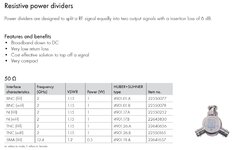thundrous
Junior Member level 3
We are trying to apply 1MHz and 1V signals using a signal generator, through one port of bias tee.
I just wanted to check whether this is possible because usually, people use a bias tee with a DC signal.
I just wanted to check whether this is possible because usually, people use a bias tee with a DC signal.
